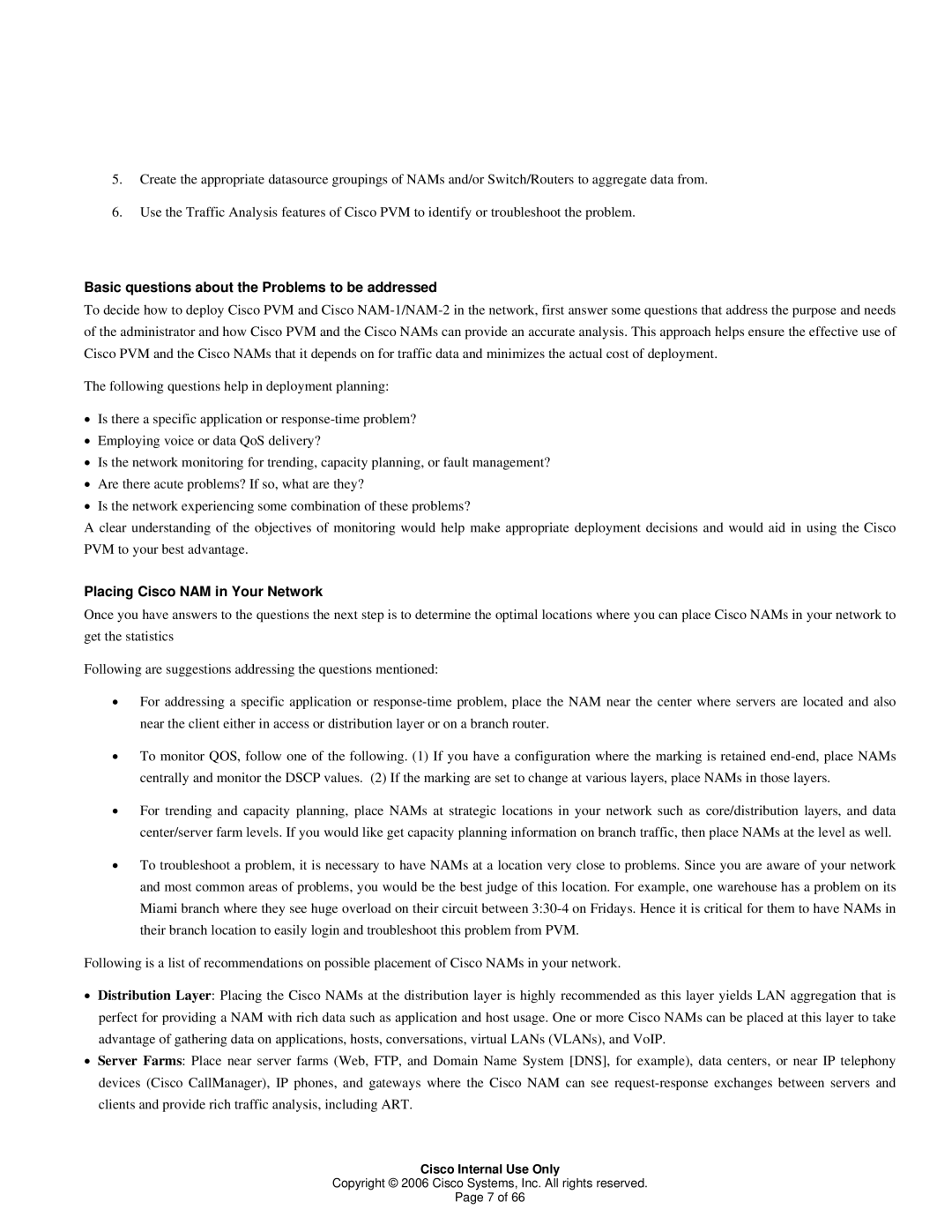5.Create the appropriate datasource groupings of NAMs and/or Switch/Routers to aggregate data from.
6.Use the Traffic Analysis features of Cisco PVM to identify or troubleshoot the problem.
Basic questions about the Problems to be addressed
To decide how to deploy Cisco PVM and Cisco
The following questions help in deployment planning:
•Is there a specific application or
•Employing voice or data QoS delivery?
•Is the network monitoring for trending, capacity planning, or fault management?
•Are there acute problems? If so, what are they?
•Is the network experiencing some combination of these problems?
A clear understanding of the objectives of monitoring would help make appropriate deployment decisions and would aid in using the Cisco PVM to your best advantage.
Placing Cisco NAM in Your Network
Once you have answers to the questions the next step is to determine the optimal locations where you can place Cisco NAMs in your network to get the statistics
Following are suggestions addressing the questions mentioned:
•For addressing a specific application or
•To monitor QOS, follow one of the following. (1) If you have a configuration where the marking is retained
•For trending and capacity planning, place NAMs at strategic locations in your network such as core/distribution layers, and data center/server farm levels. If you would like get capacity planning information on branch traffic, then place NAMs at the level as well.
•To troubleshoot a problem, it is necessary to have NAMs at a location very close to problems. Since you are aware of your network and most common areas of problems, you would be the best judge of this location. For example, one warehouse has a problem on its Miami branch where they see huge overload on their circuit between
Following is a list of recommendations on possible placement of Cisco NAMs in your network.
•Distribution Layer: Placing the Cisco NAMs at the distribution layer is highly recommended as this layer yields LAN aggregation that is perfect for providing a NAM with rich data such as application and host usage. One or more Cisco NAMs can be placed at this layer to take advantage of gathering data on applications, hosts, conversations, virtual LANs (VLANs), and VoIP.
•Server Farms: Place near server farms (Web, FTP, and Domain Name System [DNS], for example), data centers, or near IP telephony devices (Cisco CallManager), IP phones, and gateways where the Cisco NAM can see
Cisco Internal Use Only
Copyright © 2006 Cisco Systems, Inc. All rights reserved.
Page 7 of 66
